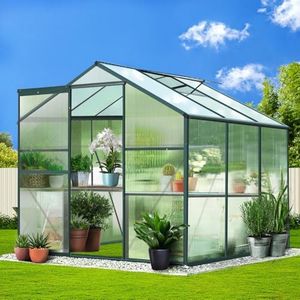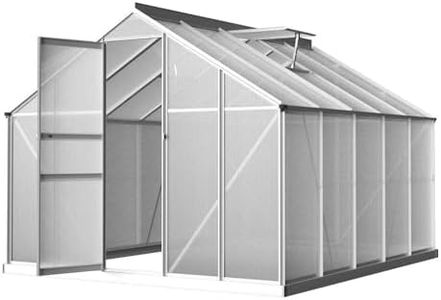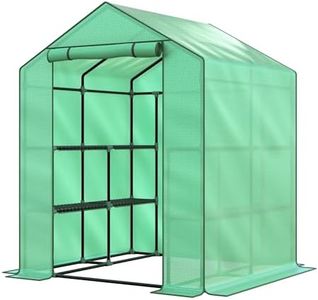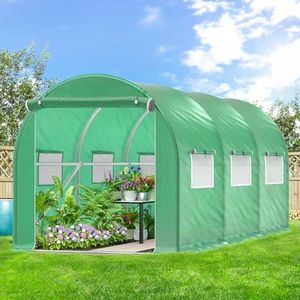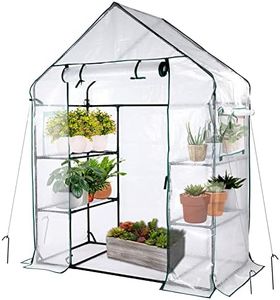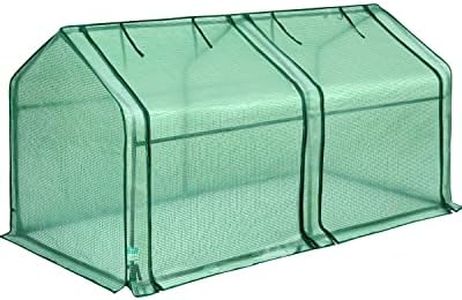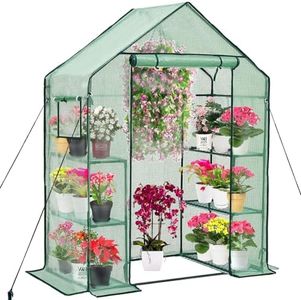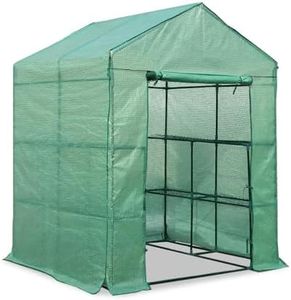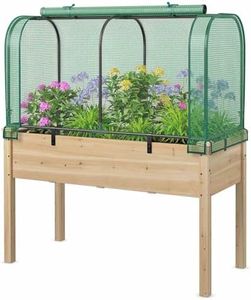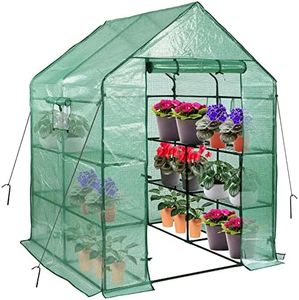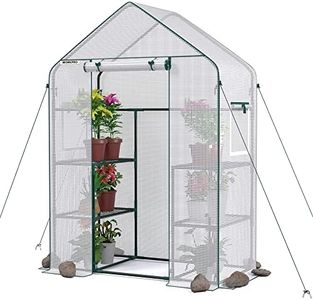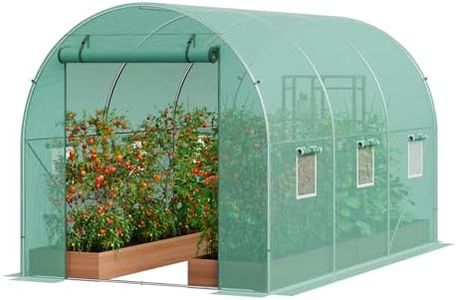We Use CookiesWe use cookies to enhance the security, performance,
functionality and for analytical and promotional activities. By continuing to browse this site you
are agreeing to our privacy policy
10 Best greenhouses
From leading brands and best sellers available on the web.Buying Guide for the Best greenhouses
Choosing the right greenhouse can make a big difference in your gardening experience, helping you to extend growing seasons, protect your plants, and optimize growing conditions. When picking a greenhouse, you’ll want to consider several key features that align with your garden size, climate, and the types of plants you plan to grow. Understanding these features helps you make a decision that suits your needs, making plant care easier and more enjoyable.Size and DimensionsThe size and dimensions of a greenhouse refer to its length, width, and height. This is crucial because it determines how many plants you can grow and how much space you’ll need in your yard. Smaller greenhouses (under 6x6 feet) are good for a few plants and tight spaces, while medium-sized options (6x8 to 8x10 feet) work well for most home gardeners. Large greenhouses (over 10x12 feet) are suitable for ambitious gardeners or those wanting to grow a variety of crops year-round. Think about the available space and your gardening goals when deciding on size.
Frame MaterialFrame material refers to the structure that holds your greenhouse together. Common materials are aluminum, wood, and steel. Aluminum frames are lightweight, rust-resistant, and low maintenance. Wood gives a natural look and good insulation but may need more upkeep. Steel frames are strong and durable but can be heavy and may require rust protection. Choose a frame based on your climate, the look you want, and how much effort you're willing to put into maintenance.
Glazing (Covering) MaterialGlazing material is what covers the greenhouse and controls light, heat retention, and insulation. Popular options include glass, polycarbonate, and polyethylene film. Glass lets in the most light and offers a classic look but can be heavy and breakable. Polycarbonate is lightweight, durable, and provides good insulation, making it a common choice for many. Polyethylene film is affordable and easy to replace but may not last as long. Your climate, light requirements, and safety needs should help guide your choice here.
VentilationVentilation describes the greenhouse’s ability to allow fresh air to circulate and regulate temperature and humidity. Proper ventilation is essential to avoid overheating and pest problems. Greenhouses may include roof vents, side vents, or louvered windows. Some have manual vents, while others can automate the process. If you live in a hot climate or grow delicate plants, prioritizing good ventilation is key, so look for enough adjustable vents.
InsulationInsulation refers to how well the greenhouse holds in heat, helping plants grow even in cooler temperatures. Good insulation lowers heating costs and keeps temperature fluctuations to a minimum. It mostly depends on the glazing material but can also be improved with double walls or insulation kits. If you plan to grow year-round or live in a cold region, focus on higher-insulation options.
Access and DoorsAccess and doors mean how easily you can enter and move around inside the greenhouse. Door size and type (single, double, sliding, hinged) affect convenience, especially if you use a wheelbarrow or bring in large trays. Consider accessibility for you and your tools, as well as if you might want to bring in larger plants or equipment.
Assembly and MaintenanceAssembly and maintenance cover how easy it is to put together and care for your greenhouse over time. Some greenhouses come with user-friendly kits, while others require more expertise and tools. Maintenance depends on materials: some need frequent cleaning, tightening, or repairs, while others can handle the weather with little work. Think about your DIY skills and how much regular effort you’d like to invest.

